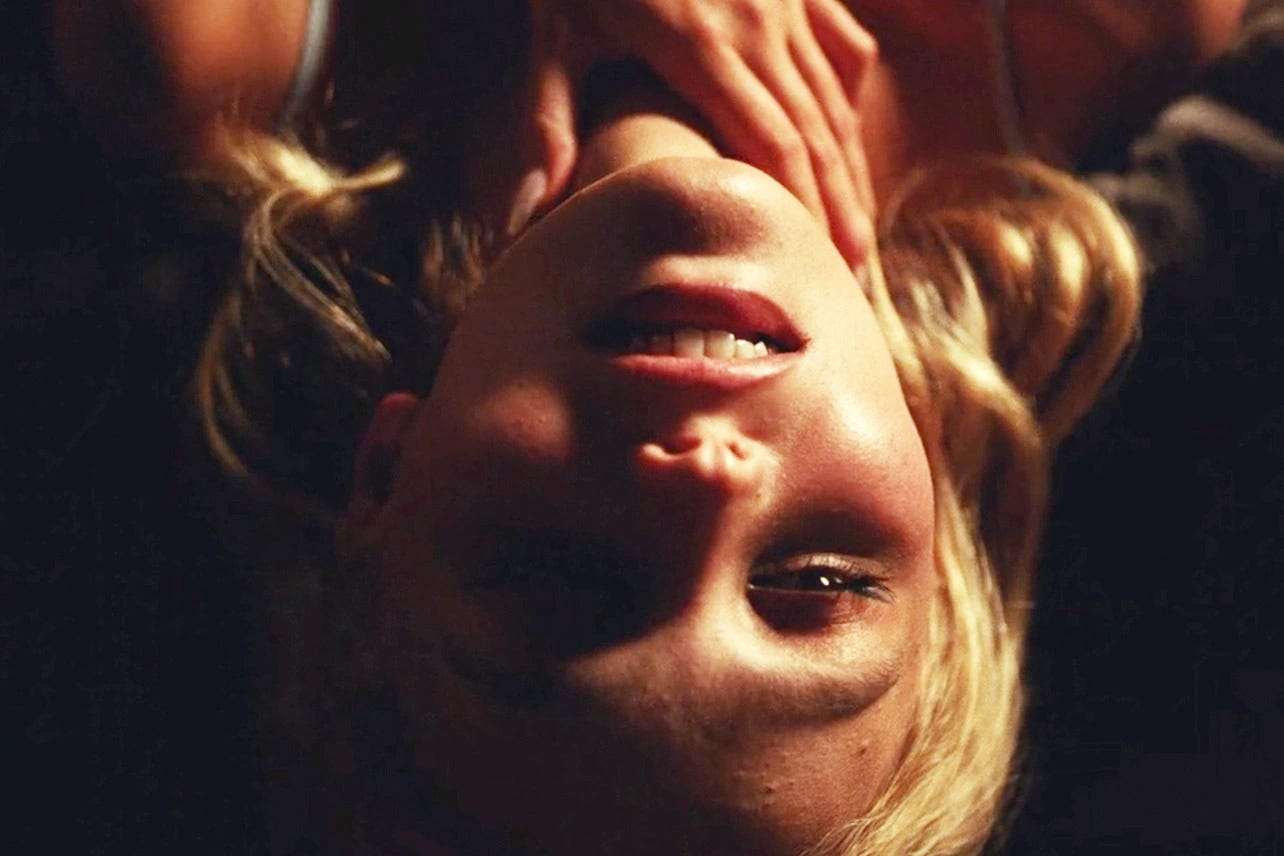
A Tale in Two Performances
By now I trust that you’ve heard that The Idol isn’t good television. Its fifth and final episode aired on Sunday, July 2nd. It was a befuddling flop.
I’ve already done a “reconstruction” of the series premiere via my notes. That episode of The Acquired Tastes Auditory Experience is available now:
'The Idol' Kneels at the Altar of Tits & Ass
Listen now (31 min) | The Acquired Tastes Auditory Experience - Episode #2
The show is over, but I’m not quite finished with The Idol.
Since the show’s conclusion, I have rewatched it in its entirety. Does that make me a hero? No. A martyr? Maybe. A masochist? All signs point to ‘yes’.
I have taken copious notes in an attempt to figure out what the fuck is happening in this show and why I should care.
I often need to watch television shows twice: the first time, I’m figuring out what’s happening week-to-week; the second time, already familiar with the program’s plot, I can evaluate the show’s overall plot structure and character progression.
This was an absolute necessity with The Idol, a show whose obscure intent and muddled text have been subsumed by the media hoopla surrounding the program’s lurid content. Rewatching The Idol, the show still sucked. Nothing can change that fact. However, I did see things very differently, hence my refusal to move on.
As is often the case when I spend time picking apart trash, the more time I spend with the text the more it grows on me. I come to appreciate the intricacies of its failure. I’m recording a more comprehensive evaluation of the show to be released this week.
For now, I will tell you that the show is exceptionally boring. Character development is so scarce that, on the first watch, I couldn’t even venture a guess as to what it all meant. Upon second viewing, I felt more attuned to what the show was trying to do. Furthermore, I began to understand how The Idol is attempting to articulate its perspective.
If I told you that the character growth of the show’s protagonist was encapsulated and reflected in two performances that bookend the show, would you believe me?
I want to know what you see. I want to know if The Idol is able to use visual language to tell you, the viewer, something about Jocelyn’s character. Is there evidence that Jocelyn’s relationship with her own sexuality and sexual exploitation have evolved? Or has the vapidity of The Idol driven me to hallucinate some semblance of meaning where none exists?
Compare the following (hypersexual) performances and tell me, based exclusively on these performances: Has Jocelyn changed? How so? How do you know? Is there a marked difference between these scenes? Or is it all just nearly-nude gyration?
Episode One: “World Class Sinner”
In the series premiere, Jocelyn rehearses choreography for her upcoming music video performance. The song is called “World Class Sinner,” a song created by Jocelyn’s record label to facilitate her rebrand as a “bad girl.” Jocelyn regards the song as generic, uninspired. This is a demonstration of Jocelyn’s art and persona at the series’ outset, prior to meeting Tedros (Abel “The Weeknd” Tesfaye).
How is the camera observing Jocelyn? How is Jocelyn presenting herself to the viewers? Consider the movements, lyrics, and mise-en-scène.
For better or worse (I’m inclined toward the latter), this is how The Idol wants to communicate with you.
Episode Five: The ‘Dollhouse’ Dance
*Spoiler Alert for The Idol, a show not worth your time*
In the series finale, Jocelyn has scrapped “World Class Sinner” in favor of music she’s created with Tedros. In a last-ditch effort to salvage her career, she performs “Dollhouse” to prove to her tour manager that she still has what it takes.
By this point, the relationship between Jocelyn and Tedros is coming to an end. Jocelyn’s performance is intercut with Tedros’ expulsion. Tedros has served his purpose and outlived his usefulness. I will elaborate on their dreadfully uninteresting relationship in the forthcoming series recap.
How does “Dollhouse” differ from “World Class Sinner” in terms of its sound, message, and aesthetic presentation? How has Jocelyn changed the way she presents herself and her art? Has anything changed? Am I losing my mind?
I’m eager to know what you think.
I believe The Idol has something to say. It may not be a message worth saying, and it may be articulated poorly, but the show is saying something.
I believe underneath the exploitative aesthetics, Jocelyn’s entire character arc is contained within these two videos. So too, I believe, is The Idol’s preeminent statement about success and exploitation within the music industry.
This is a show about sexual exploitation, manipulation, and the way that mythic celebrity personas are constructed within the music industry. By the series finale, Jocelyn has become more aware of her own exploitation, and I believe her ‘Dollhouse’ performance showcases Jocelyn’s (arguably problematic) character development. To what extent is Jocelyn complicit in her own exploitation? In what ways is she pandering to existing power structures? Does Jocelyn’s awareness of her own exploitation constitute a reclamation?
I look forward to sharing more of my thoughts in a forthcoming episode of The Acquired Tastes Auditory Experience. Until then, I hope you will share your thoughts in the comments below.
I won’t be emailing you when the episode releases — I promised I would only pop into your inbox on Sundays — but a full series recap of The Idol will be included in next week’s newsletter, alongside more new content.
Don’t miss a beat. Acquired Tastes has new content every week.
Until next week, my fellow film freak.



